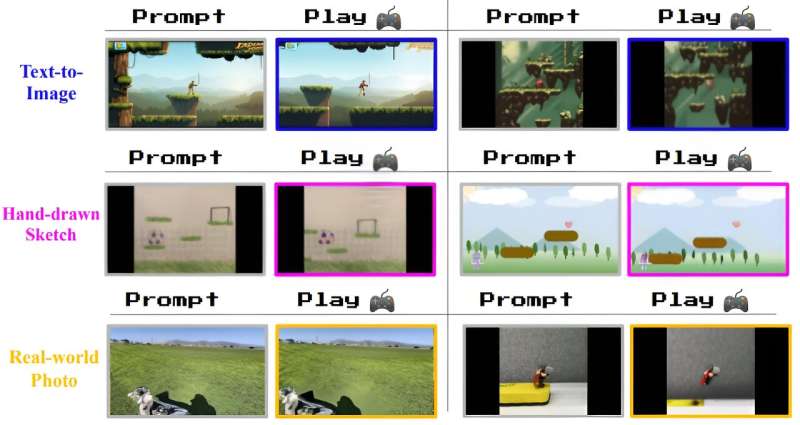
AI researchers at Google's DeepMind, working with colleagues at the University of British Columbia, have announced the development of Genie, an AI-backed application capable of turning a single image into a playable 2D virtual world.
The team has posted a paper on the arXiv preprint server outlining their work and have also posted an announcement page on DeepMind's research site.
Two-dimensional video games, such as Super Mario Brothers, allow players to manipulate a character on a video screen as they proceed through a virtual world. In this new effort, the team at DeepMind has automated the process of creating 2D video games by allowing Genie to accept a single image, such as a character in front of an imagined background, and then using it to generate the rest of the game. This was made possible by training it on thousands of hours of video from hundreds of 2D video games.
To create Genie, the team first built an AI application that was able to tokenize video frames into millions of parameters that it could use to build new frames. They then added what they describe as a "latent action model" to make predictions about what a given next scene might look like based on the current image.
Next, they added a module to generate a dynamic model to make guesses about possible next sequences based on what it learned during the training phase. The result is a series of frames linked together to form what looks like a 2D virtual world.
The researchers acknowledge that Genie is still very much a work in progress. It has several limitations not easily seen in the examples provided. It takes a very long time to run, for example—it is approximately 20 to 30 times slower than what the average player would consider normal speed. It also makes a lot of mistakes—it can create unrealistic worlds that are not playable, for example. It is also currently limited in scope—it can only run 16 frames at a time.
Still, the team at DeepMind suggests that Genie demonstrates a new step forward in video game development, allowing users to generate their own games based on their own unique preferences.
More information: Jake Bruce et al, Genie: Generative Interactive Environments, arXiv (2024). DOI: 10.48550/arxiv.2402.15391
Genie: Generative Interactive Environments: sites.google.com/view/genie-2024/home and
deepmind.google/research/publications/60474/
Journal information: arXiv
© 2024 Science X Network
Citation: DeepMind demonstrates Genie, an AI app that can generate playable 2D worlds from a single image (2024, March 6) retrieved 6 March 2024 from https://techxplore.com/news/2024-03-deepmind-genie-ai-app-generate.html
This document is subject to copyright. Apart from any fair dealing for the purpose of private study or research, no part may be reproduced without the written permission. The content is provided for information purposes only.
